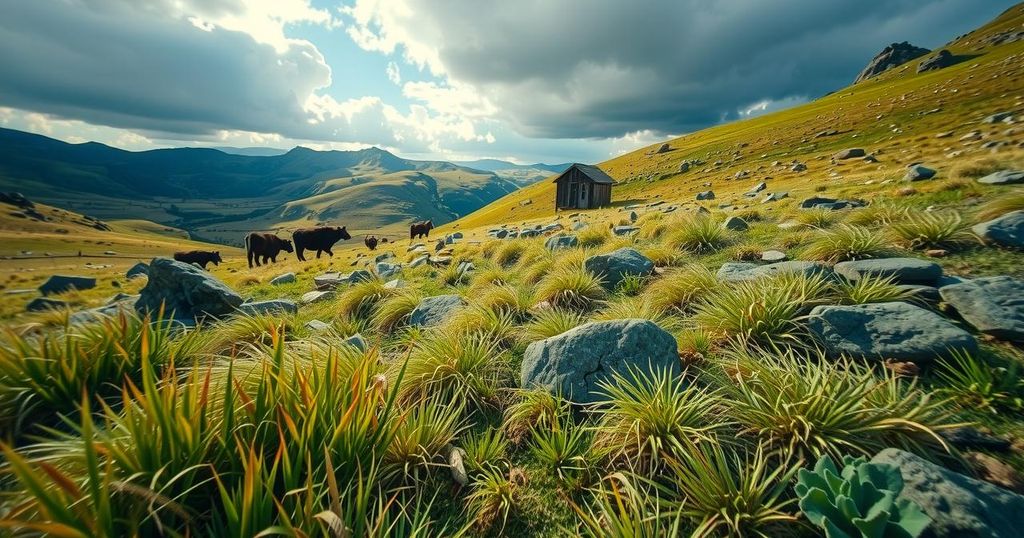Rapid Biodiversity Changes in Grasslands Due to Climate Change
A study reveals that grasslands are undergoing rapid biodiversity changes due to climate change, with significant shifts towards species that thrive in hotter and drier conditions. The findings highlight the necessity of considering climate impacts in grassland restoration efforts to mitigate losses in biodiversity.
A recent study reveals that grasslands are experiencing rapid changes in biodiversity as a direct consequence of climate change. According to Yiluan Song, a postdoctoral fellow at the University of Michigan and the co-lead author of the study published in Nature Ecology & Evolution, the effects of climate change on ecosystem dynamics can transpire much quicker than previously understood. “Grasslands are at the faster end of the spectrum,” he states. The study’s findings underscore the importance of understanding these changes, particularly in the context of restoration efforts for grassland ecosystems. The researchers analyzed extensive observational data spanning several decades across twelve studies focusing on grassland communities in the California Floristic Province, a highly biodiverse region along the west coast of the United States. By identifying the climate preferences of various plant species, the researchers were able to quantify the shifts in these communities in response to changes in temperature and precipitation. As the region’s climate has become increasingly hotter and drier, species that favor these conditions have begun to dominate, leading to the displacement of species that thrive in cooler, wetter climates. Song elaborates, “The rapid shifts in grassland communities involve not only the gain of some hotter, drier species but also the loss of some cooler, wetter species,” indicating that these changes might have detrimental effects, such as the proliferation of non-native species and a subsequent decline in biodiversity. The pace of these ecological transformations is noteworthy; the speed of adaptation in grassland communities is remarkably similar to the rate of current climate changes, characterized by short-lived species that are more directly influenced by macroclimate fluctuations. In contrast to grasslands, other ecosystems dominated by long-lived species, such as forests, have shown a much slower response to climate change, leading to a growing phenomenon referred to as “climatic debt.” Although the study centered on a specific geographical area, co-lead author Kai Zhu posits that similar patterns may be observed in grasslands globally, stating, “I would hypothesise that we may see an even greater response to climate change in other grasslands around the world.”
Climate change represents one of the most pressing challenges facing ecosystems around the globe. Different ecosystems exhibit varying rates of response to climatic shifts. Grasslands, in particular, may react more swiftly due to their composition of short-lived plant species that can quickly adapt to changes in temperature and precipitation. This research sheds light on how rapidly these ecosystems are changing, which is critical for effective conservation and restoration strategies.
In summary, the rapid shifts in grassland biodiversity due to climate change elucidate the urgent need for a deeper understanding of these processes. As grassland species adapt quickly to new climatic conditions, it is crucial for restoration plans to integrate considerations of climate change to preserve these vital ecosystems. The findings indicate that while grasslands may respond rapidly to climate changes, there are significant risks associated with the loss of biodiversity and the increasing dominance of non-native species.
Original Source: cosmosmagazine.com




Post Comment